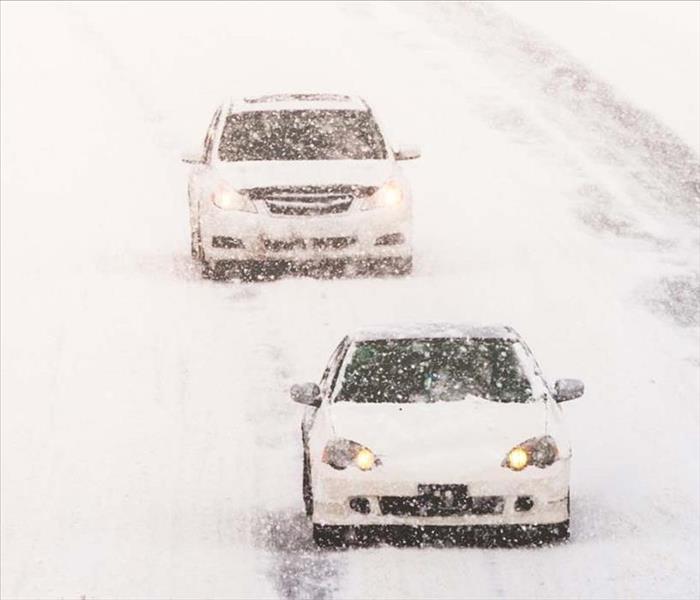Vehicle Safety in the Winter and Winter Storms
10/13/2021 (Permalink)
Before winter gets here, it is a good idea to start preparing your vehicle. You want to make sure your vehicle is in good working order before the snow starts flying. Here are a few things to check, and fix if needed:
1. It is best to start your inspection no later than November. You may want to start even sooner if you live in a colder environment. You don’t want to be stuck in the snow unprepared.
2. When the temperatures start dropping outside, so does the tire pressure on your vehicle. If the tire pressures drop too much, the performance of your vehicle goes down. When driving on ice and snow, proper air pressure will ensure maximum performance. To see the recommended tire pressure for your vehicle, check the data label inside your vehicle’s driver door, or refer to the owner’s manual.
3. Test your battery. Cold weather reduces the power your battery is capable of producing. At zero degrees F, your battery can only deliver half its normal amperage. If you do not have a battery tester, most auto parts stores will test your battery for you for free. It is also a good idea to keep a pair of jumper cables in your vehicle, in case you unexpectedly experience a weak or dead battery.
4. Check your windshield for cracks or chips. If you have any small chips, have them repaired by a local auto glass company. By having them filled in, this will keep the cracks or chips from spreading. You also want to make sure you have good windshield wiper blades.
5. Inspect your headlights and brake lights. If it is storming, you want to make sure your lights are in working order so you can see, and so people can see you.
6. In winter, it is very important to have an emergency kit in your vehicle. You will want blankets, warm clothes, winter shoes, flashlight, batteries, water, etc.
7. When traveling in winter conditions, always let someone know where you are going, and when you expect to arrive. Then check in when you get to your destination.
By following these tips, you can have a safer winter on the roads.




 24/7 Emergency Service
24/7 Emergency Service
